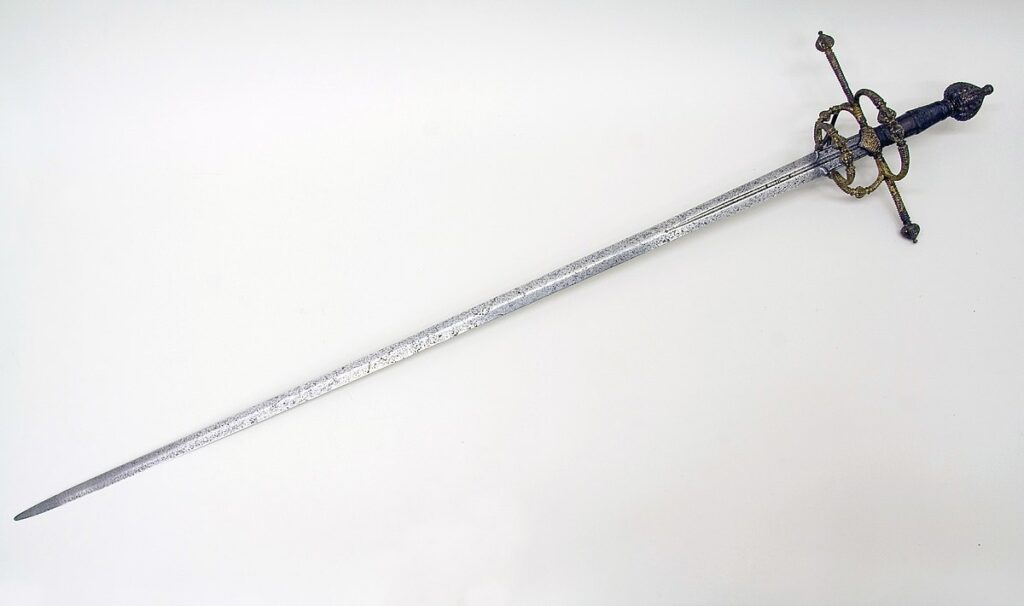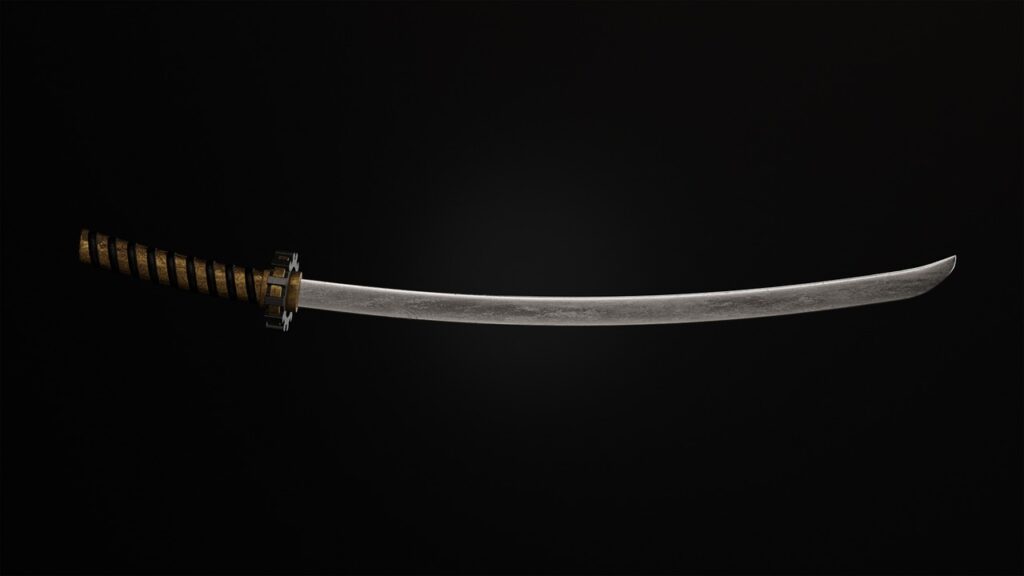A sword is a bladed weapon consisting of a long, metal blade attached to a handle or hilt. Swords have been used for thousands of years in various cultures around the world for combat, self-defence, ceremonial purposes, and as symbols of status and authority. They come in a wide range of designs, shapes, and sizes, each optimised for different types of combat or cultural practices.
Criteria: We will take into account origins, popularity and design.
10: Falchion

The Falchion sword originated in medieval Europe between the 11th and 16th Centuries and were popular among infantry and cavalry. They have a slightly, curved blade which has a single, broad cutting edge. Ranging in size, some resemble oversized knives while others have more sword-like proportions. Their design meant they were effective for slashing and cutting attacks, making them well-suited for close-quarters combat. They were quite a heavier build of sword, which allowed for powerful blows dealt during slashing. It was considered a lower class of weapon as it was cheaper make than a longsword and easily accessible to lower classes of people and soldiers.
9: Sabre

The sabre sword is a curved, long, single-edged blade optimised for slashing attacks that comes from various cultures but has a strong association with cavalrymen in Europe from the 17th to the 19th century. They were used greatly during charges from calvary against infantry and were prized for their effectiveness. The sabre is the ancestor that bore the sport of modern day fencing, which first saw its debut at the 1896 Olympics. The hilts of sabres extended to offer more protection for the hands of cavalrymen. A versatile and lighter sword capable of multiple styles of attack during combat.
8: Longsword

The Longsword is one of the most popular swords with many depictions of swords taking the form of the longsword. It is a double-edged sword that has a straight blade that is longer than most of the other entries on this list, allowing for versatile cutting and thrusting techniques. Usually wielded with two hands but was able to be used with one hand when necessary. Longswords were used by a variety of people including Knights, Mercenaries and men at arms for both battlefield combat and personal defence. Originating in medieval Europe, they saw extensive use during the 14th and 16th centuries. It has a very versatile role, able to excel in both offensive and defensive situations.
7: Zweihänder

The Zweihänder, which translates to “two-hander” or “two-handed sword” in German, is a large, two-handed sword that was used in Europe during the late medieval and Renaissance periods – originating from Germanic regions in Europe in the 15th Century. Total lengths of these swords could exceed 2 metres and quite heavy which helped to deliver powerful strikes against opponents and to counter the weight of armour. It was primarily used by infantry soldiers, known as landsknechts, which saw great effectiveness against heavily armoured warriors. Its role was to break through formations, disarm opponents and engage multiple opponents, all at a distance.
6: Cutlass

Swords fit for pirates! The cutlass had a short, broad-bladed design with a slightly curved blade and a handguard for protection. Extensive use of this sword was seen in maritime cultures by sailors and pirates as they were compact and durable, making them suitable for close-quarters combat aboard ships. Boarding actions, naval combat, and self-defence often saw the Cutlass used. During forging, it was made to be resilient to withstand constant and extensive use in combat. Its symbol as a weapon of the seas is also commonly shown in modern media including film, literature and often used in historical re-enactments and pirate-themed events.
5: Rapier

The Rapier is a slender-bladed sword with a distinctive hilt popular in Europe during the 16th and 17th centuries and a particular symbol of the Renaissance period. Its design and size made it ideal for thrusting and helped shape the art of fencing, with a lightweight build that allows for quick thrusts and parries. The hilt of a rapier was complex and often ornate design that was designed to protect its users hand. The sword was symbol of wealth and power in most European societies and aristocracy, worn as part of an outfit and showcasing that wearers were always combat ready and as a fashion statement. They played a key role in duelling and settling disputes.
4: Gladius

The signature weapon of Roman military: a double-edged blade usually no longer than about 60cm in length and tapered at the end – specialised for thrusting attacks. The gladius was a heavy sword that was balanced out with a particular pommel and hilt, perfect use for one-handed grip. It dates back to the 3rd century BC where it saw much combat at the hands of the Roman Empire and was made from a combination of high-quality metal, wood, and bone. Its design influenced the development of many later European swords.
3: Khopesh

A sword that is synonymous with the Ancient Egyptian civilisation with a design that moves away from the traditional sword shape more so than any on our list. Its shape resembles a sickle, which was extremely effective in close combat and allowed for the hooking of an opponent’s weapon or shield. Used both as a weapon of war by the ancient Egyptian armies and as a ceremonial tool of power – certain khopeshes were often decorated with inscriptions and cultural designs. These swords were sometimes found in the tombs of pharaohs and figures of high importance, such as generals which solidified there high status.
2: Scimitar 

An iconic sword hailing from the Middle East and surrounding cultures and civilisations, the scimitar is known for its distinctively curved blade, which offers stability and control during powerful slashing. The scimitar proved popular and soon made its way into other cultures such as the Ottoman Empire and the Mongols which favoured its superior slashing ability particularly during mounted combat. This sword birthed many variations of its curved design and is a symbol of defence of faith and justice, particularly in Islam. The sword makes various appearances and is referenced in literature, art and modern media.
1: Katana

Our top spot is filled by one of the most famous swords in the world, the traditional Katana, which holds huge significance in Japanese culture. The curve of the sword is made to deliver a clean cut. The forging of a Katana is said to be from iron sand (sand which contains iron ore) which goes through a complex process that can take months of folding the metal numerous time and then an intensive hardening process, finishing it off with meticulous polishing to enhance its beauty and sharpness. They are the iconic weapons of the Japanese samurai and became a symbol of duty and honour, and in modern times, have become a collector’s item and still highly treasured in Japan.
Honourable Mention: Ulfberht

A sword hailing from the lands of the Vikings, known for its quality of build. They were made from a superior metal which was far more advanced that what was being used in Mainland Europe at the time. These swords came with the inscription “+VLFBERHT+” on them which was believed to be similar to a trademark form specific blacksmiths or also could’ve had religious significance, which embodied protection. The swords have been found all over Scandinavia and metallurgical analysis backs the theory that the quality of craftmanship and metal was superior to others of its time.
Other Contenders
Dao: Known as a Chinese Broadsword, it was powerful and used primarily in the Song Dynasty.
Kopis: A Greek sword with a forward curving blade, used more commonly as a tool than a weapon.
Falcata: A sword used by people of Iberia, known for its powerful chopping ability.

